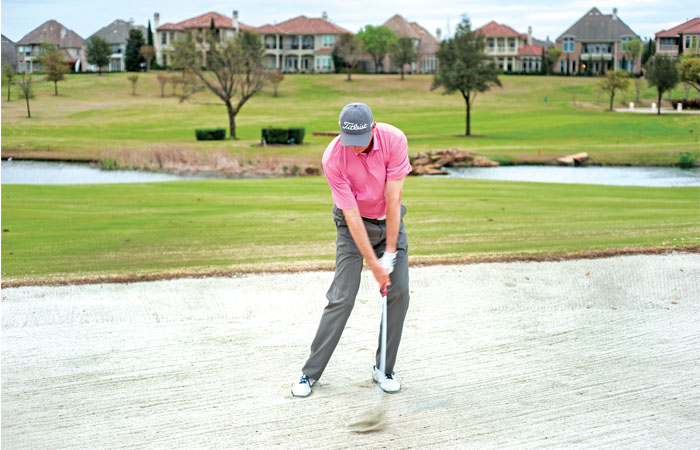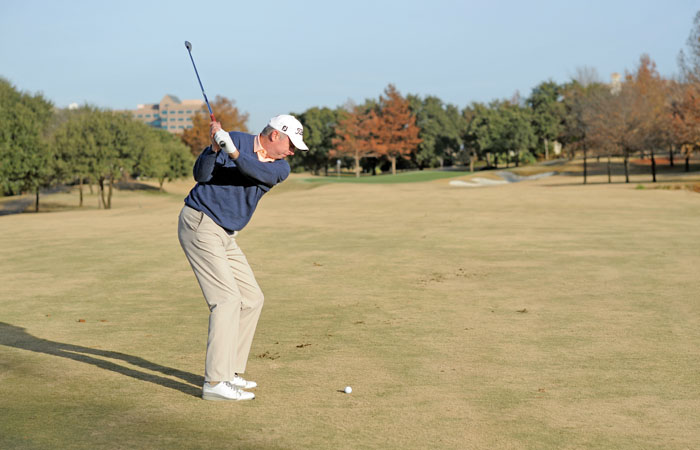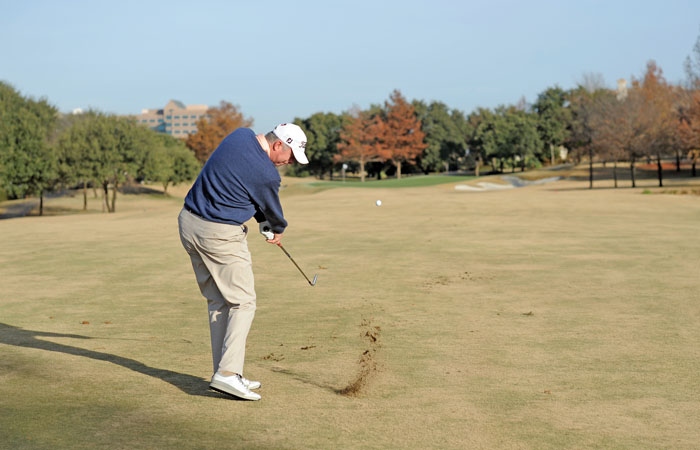Setup is very important in putting to get the ball started on the intended line as well as help with distance control. Start with your feet shoulder width apart. Then stand tall with your arms straight out in front of you at chest high, making sure the putter grip, shaft and clubhead are all the same level even with your forearms. From here, bend your elbows into your side while rotating your forearms and biceps clockwise (if someone is standing in front of where your golf ball is, your biceps should point toward them). Lastly, bend your knees slightly and bend forward pushing your hips back, allowing your shoulders and armpits to be directly above the middle of your feet.
Now that you are set up properly, one of the most important keys in putting is to have light grip pressure throughout the entire stroke. This is especially important for lag putting! I see too many students’ grip pressure tighten on the through stroke, making the ball roll out further, therefore leaving the student with inconsistencies in their distance control. A key to focus on with the grip pressure on lag putts is making sure your lead pinky grip pressure is light (left pinky for right-handed golfers). When I see a student’s grip pressure tighten in the lead pinky, the ball rolls several feet further than when the grip pressure is light in the lead pinky. So to stay consistent, keep the grip pressure the same the entire stroke. The lighter, the better.
If you are serious about shooting lower scores, having a consistent tempo in all parts of the game is very important, especially when it comes to short game.
For this drill, balance a quarter on the back of your putter and make a normal stroke. The goal is to keep the quarter on your putter back and through. If the quarter falls off, this indicates, you have an inconsistent tempo during your transition from the back stroke to the through stroke. If your transition is quick, the coin will fall off and be left behind the putter head.

A good way to practice having a smooth tempo with this drill is to make some practice strokes with the quarter on your putter, swinging the putter back and forth in a pendulum motion focusing on keeping the quarter on the putter head. After you do this several times, take the quarter off and hit some putts, focusing on having the same rhythm you had when the quarter was on the putter.
One of the questions I get asked all the time is, “How do I know how far back to take the putter for various length putts?” Below are some metrics I like to use for distance control.

Starting with your feet shoulder width apart, the first length stroke is little toe to little toe back and through. If you were to make this same length stroke with the same tempo on 20 putts, they would all end up the same distance from you. The best way to measure the length the ball travels for the different length putts is to close your eyes and putt four putts. After you do this, open your eyes and pace out the distance from your feet to the average location of the four putts. This is how far your little toe to little toe length stroke travels. I find for the average person on a nine-green speed, the ball will travel three paces or nine feet. Make a note card with your distances of the three various length strokes and how far the ball rolls out.

Here are the three length strokes to measure the distance the ball rolls: little toe to little toe, two inches past little toe to two inches past little toe, and four inches past little toe to four inches past little toe.
When you practice doing this drill and your eyes are open practicing having the same length swing back and through, I like to have students practice placing a coin down at the different stroke lengths to give the student a visual of where the putter travels on the backswing and the followthrough.